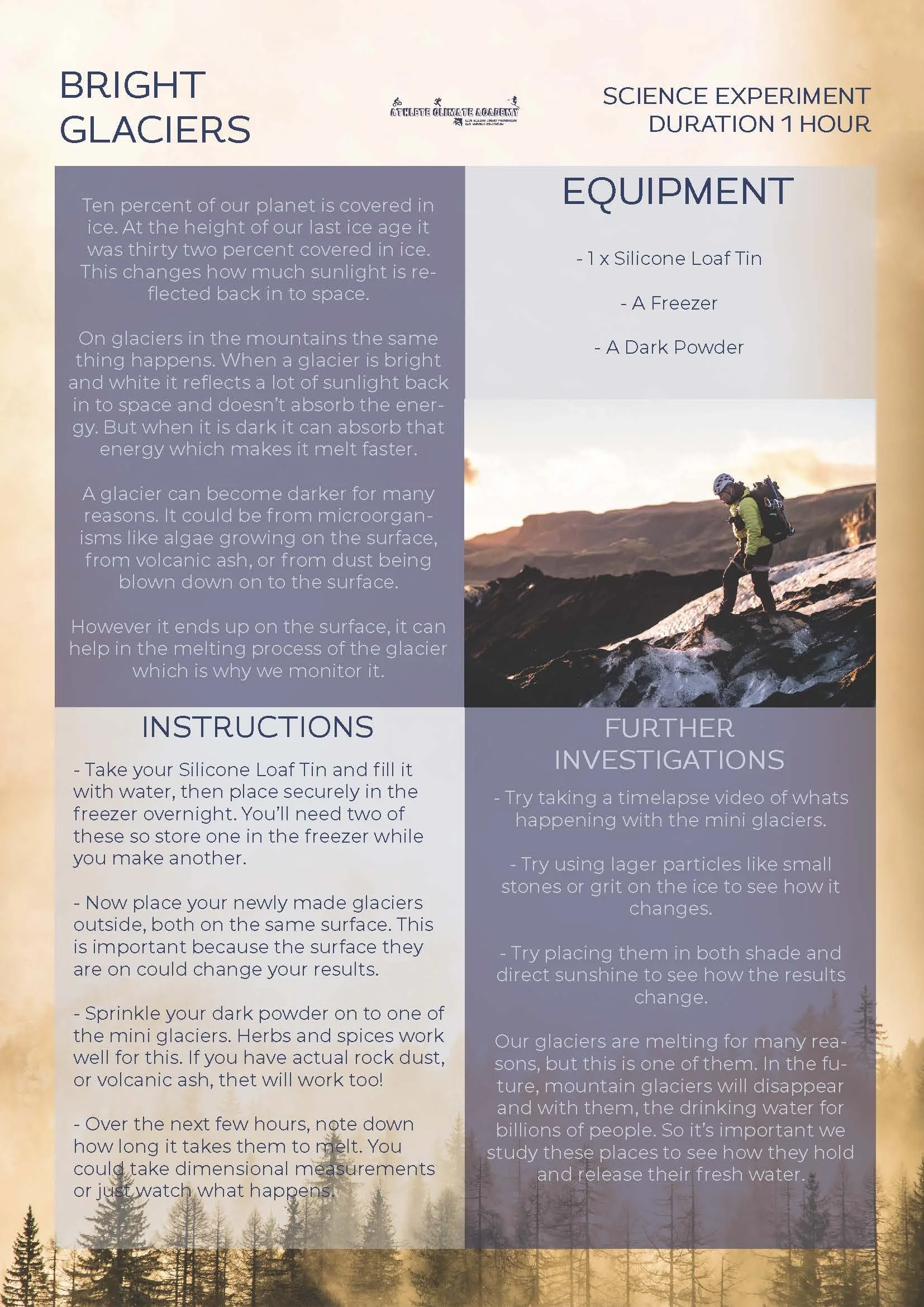The Albedo Effect of Glaciers
Glaciers are like giant, shiny mirrors made of ice and snow that cover parts of the Earth. When sunlight hits these glaciers, they reflect a lot of that sunlight back into space. This reflecting power is called the albedo effect. The word "albedo" comes from a Latin word that means "whiteness." Because glaciers are so white, they have a high albedo, which means they reflect most of the sunlight that hits them.
Think about when you wear a white T-shirt on a hot, sunny day. You feel cooler than if you were wearing a dark T-shirt because the white color reflects more sunlight. Glaciers work the same way. They keep the Earth cooler by bouncing a lot of the sun’s energy back into space. This helps to keep our planet from getting too warm.
However, when glaciers melt, they reveal the darker ground or water underneath. These darker surfaces have a lower albedo, which means they absorb more sunlight instead of reflecting it. It’s like switching from a white T-shirt to a black one on a hot day – the Earth starts to warm up faster because more sunlight is being absorbed. This warming can cause even more glaciers to melt, creating a cycle that makes the Earth warmer and warmer.
So, glaciers are very important for keeping our planet cool. By reflecting sunlight, they help control the Earth's temperature. But when they melt, less sunlight is reflected, and more is absorbed, which can lead to more global warming. Understanding the albedo effect helps us see why it’s so important to protect our glaciers and reduce the activities that are causing them to melt.
